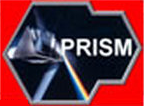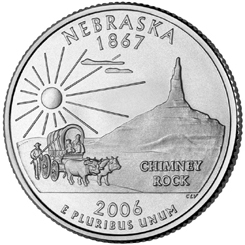
- Capital City:
- Lincoln
- Nickname:
- Cornhusker State
- Motto:
- Equality before the law
- Statehood:
- March 1, 1867 (37th)
- Origin of State's Name:
- Based on an Otos Indian word that means "flat water," referring to the Platte River
- Largest Cities:
- Omaha, Lincoln, Grand Island, Bellevue, Kearney
- Border States:
- Colorado, Iowa, Kansas, Missouri, South Dakota, Wyoming
- Land Area:
- 78,878 sq.mi., 15th largest
- State Bird:
- Western Meadowlark
- State Flower:
- Goldenrod (solidago)
- State Tree:
- Eastern Cottonwood (populus deltoides)
- State Song:
- Beautiful Nebraska
Nebraska gets its name from an Indian word meaning "flat water" after the Platte River that flows through the state. The Nebraska Territory was formed in 1854 at the same time as the Kansas Territory. Nebraska was admitted into the Union in 1867 as the 37th state. Its nickname, "Cornhusker State," refers to the way that corn (a leading product of the state) was commonly harvested, "husking" it by hand, before the invention of husking machinery. Another nickname, the "Beef State," refers to one of Nebraska's main industries, cattle. Omaha has been a major meatpacking center since the 1880s. Although Omaha was the territorial capital, Lincoln, named in honor of the 16th president, is the state capital. The flower is the goldenrod.
Nebraskaland Days
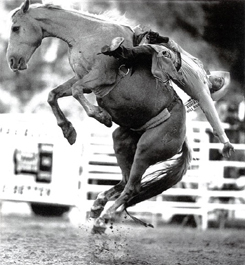
The man in the photo is about to be thrown off his horse. He is trying very hard to stay on a bucking bronc -- a horse that hasn't been "broken," or made suitable for riding. Bareback bronc riding is an event at the Buffalo Bill Rodeo during a celebration of Nebraskan culture called Nebraskaland Days in North Platte. The idea for the Buffalo Bill Rodeo came from the man himself, Buffalo Bill.
Buffalo Bill was born William Frederick Cody in Iowa in 1846. He became famous for his adventures as a scout and hunter in the West. On the Fourth of July in 1882, Buffalo Bill held an "Old Glory Blowout" in North Platte, Nebraska. It included buffalo riding, bucking bronc riding, steer roping, and horse racing. The town of North Platte claims it as the first rodeo ever held. The show also had a buffalo hunt and events in which people re-enacted, or demonstrated, battles. The "Old Glory Blowout" was such a success that Buffalo Bill took the show, known as "Buffalo Bill's Wild West," on the road throughout the United States and even to Europe. The Wild West show made him world famous, and he toured with it until 1916. Today, the Buffalo Bill Rodeo and Nebraskaland Days is the modern-day version of Buffalo Bill's Wild West show.
Winnebago Powwow

Have you ever been to a powwow? If you went to Winnebago, Nebraska, in July, you'd have a chance.
For five days every July, the Ho-Chunk people hold a powwow in Winnebago. A powwow is an Indian social gathering that usually includes dance and music. The Ho-Chunk Nation is a group of Indians, also known as the Winnebago, who originally lived in the Wisconsin area. They farmed and hunted bison. Beginning in the early 19th century, the United States government forced the Ho-Chunk to give up portions of their land, and they were moved to Iowa in 1840. For the next 25 years, the U.S. government made the Ho-Chunk move again and again, from Iowa to Minnesota to South Dakota. Finally, they were allowed to settle in Nebraska, though many eventually returned to Wisconsin.
The Ho-Chunk's annual powwow in Winnebago is held to honor their last war chief, Little Priest. After the Ho-Chunk moved to Nebraska, a group of them, including Little Priest, enlisted in the Army and served in a local unit. In 1866, Little Priest died from wounds he received while in the Army. Today, the powwow remembers his sacrifice and honors all Winnebago war veterans.
The Omaha Indians in Nebraska
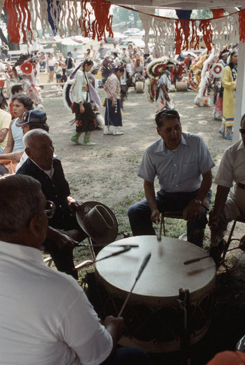
Hundreds of years ago, the Omaha Indians lived in the middle and south Atlantic regions of the United States. They gradually migrated west with other Plains Indians until they split off in South Dakota and ended up in what is now Nebraska. In 1854 the Omaha tribe gave way to the pressure of incoming white settlers and sold the majority of the land they held to the U.S. government. Today, the Omaha Reservation is located in the northeastern corner of Nebraska on 31,148 acres.
The Omaha were traditionally farmers and hunters. Their structured class system included chiefs, priests, physicians, and commoners. Groups with common goals and duties -- called clans -- performed various functions for the tribe. The earth clan was responsible for ceremonies of war and food, and the sky clan was responsible for ceremonies relating to the supernatural. Today, music and oral tradition play important roles in the preservation and perpetuation of Omaha culture. The state's largest city, Omaha, is named after the tribe.
Joslyn Art Museum: Jazz on the Green
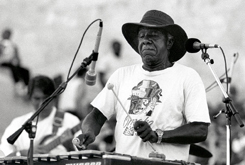
The man in the photo is playing a vibraphone. Do you know what that is?
A vibraphone is a jazz instrument that was invented around 1920. It's a percussion instrument, so a musician must beat or strike it to make sounds. It looks a little like a xylophone and has tuned metal bars that a player hits with felt or wool beaters. Striking the bars makes a soft, mellow sound. Underneath the bars are "resonators," which add vibration to the sounds that are made. In addition, small electric fans between the bars and the resonators cause a vibrato, or trembling effect. These fans are what give the instrument its name.
Thousands of people can listen to a vibraphone as they enjoy jazz music every summer at the Joslyn Art Museum in Omaha, Nebraska. Jazz was invented by African American musicians in New Orleans, Louisiana, and Kansas City, Missouri, and other cities in the late 19th and early 20th centuries. What makes it different from other music is something called improvisation. Usually a composer writes music and a musician plays it exactly as it was written. With jazz, the musicians start with a song but then improvise, or start making music up as they go along. That is why many jazz songs never sound the same way twice.
Artists-In-Residence Program
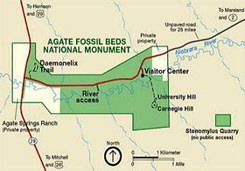
Each summer, the staff at Agate Fossil Beds National Monument continue the legacy of rancher James Cook by inviting American Indian artists back to the Niobrara Valley. In the past, artists have brought skills handed down to them such as creating beautiful bead and quill work, hide paintings, and decorated gourds.
Also on display are the remnants of a deep friendship between rancher James Cook and the Lakota (Sioux) of Red Cloud and other High Plains tribes.
Indians often visited him at his ranch and gave him gifts from the early reservation years, including fancy beaded or quilled moccasins, Indian games, a painted hide of the Custer Battle, guns, decorated clubs, a dog travois, and much more. Black and white photos of Cook's visitors, a sound track by traditional singer Bill Horn Cloud, and a colorful, contemporary "wintercount" or historical calendar, create a mood for this special collection not to be missed by admirers of indigenous culture.
 Print
Print Email
Email



